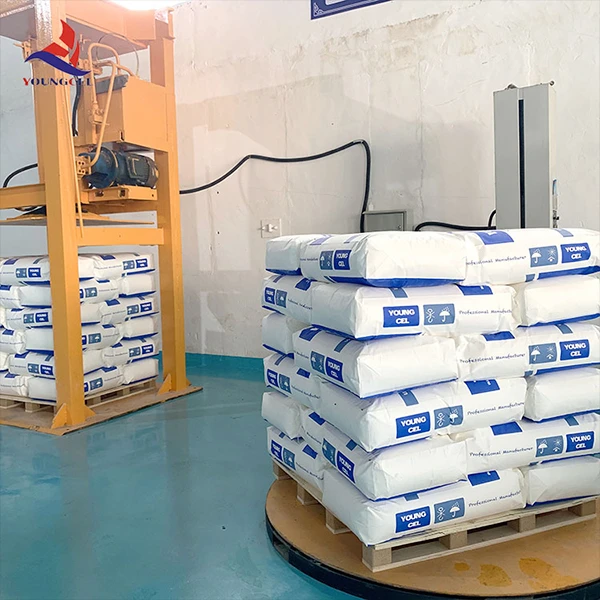The Role of Additives in Enhancing the Performance of Putty
Putty, a versatile material used in construction, manufacturing, and crafting, plays a crucial role in providing a smooth, even surface for various applications. Traditionally, it has been used for filling cracks, smoothing surfaces, and adhering materials. However, the performance and durability of putty can be significantly enhanced through the incorporation of additives. This article explores the various types of additives used for putty, their functions, and the benefits they bring to the overall properties of the material.
Understanding Putty
Putty is a malleable substance primarily made from a binder and a solvent, with various fillers that contribute to its physical properties. It is commonly used in woodworking, metalworking, and even in the art world for sculpting. The effectiveness of putty in adhering to surfaces, maintaining flexibility, and resisting environmental factors relies heavily on its formulation. This is where additives come into play. By incorporating different additives, manufacturers can tailor the characteristics of putty to meet specific needs.
Types of Additives for Putty
1. Plasticizers One of the most common types of additives used in putty is plasticizers. These compounds increase the flexibility of the putty, making it easier to work with while minimizing cracking as it dries. Plasticizers improve the workability of putty, allowing for smoother application on surfaces and ensuring a better finish.
2. Fillers Fillers are another critical category of additives. They are used to improve the density and bulk of the putty without significantly increasing its cost. Common fillers include chalk, talc, and silica. They enhance the texture, decrease shrinkage during curing, and improve the overall mechanical properties of the putty.
3. Thickeners Thickeners help adjust the viscosity of putty, allowing it to adhere better to vertical surfaces without sagging. They can also assist in controlling the flow properties of the mixture during application. These additives ensure that the putty can be easily spread but remains in place once applied.
4. Fast-drying Agents In environments where time is of the essence, fast-drying agents are invaluable. These additives significantly reduce the drying time of putty, making processes more efficient. However, it is essential to balance drying speed with working time to allow for proper application.
5. Preservatives To enhance the shelf life of putty and prevent microbial growth, preservatives are added. These additives are essential for water-based putties, as they help prevent decay and deterioration over time, ensuring that users can store the product for extended periods without compromising quality.
additive for putty

6. Colorants For decorative purposes, colorants can be incorporated into putty formulations. This allows for a range of finishes that can match various substrates and aesthetics. The inclusion of pigments not only enhances the visual appeal but can also contribute additional properties like UV resistance.
Benefits of Using Additives in Putty
The incorporation of additives into putty formulations offers numerous advantages
- Improved Performance Additives can significantly enhance the mechanical properties of putty, such as adhesion strength, flexibility, and resistance to cracking.
- Customization Different additives allow manufacturers to customize putty for specific applications, whether it be for indoor or outdoor use, artistic endeavors, or industrial applications.
- Efficiency With the right additives, putty can be formulated to dry more quickly, allowing for faster project completion without sacrificing quality.
- Cost-Effectiveness By optimizing performance with additives, manufacturers can often use less material or achieve better results with a lower quality base product, ultimately saving costs.
Conclusion
Additives play a significant role in enhancing the performance and functionality of putty. By understanding the various types of additives and their respective benefits, manufacturers can create high-quality putty that meets diverse needs across many industries. As demands for efficiency and quality increase in the construction and manufacturing sectors, the importance of tailor-made putty formulations will only grow. Thus, the innovation in putty additives is likely to continue, pushing the boundaries of what this simple yet essential material can achieve.
-
Rdp Powder: Key Considerations for Wholesalers in the Building Materials IndustryNewsJul.08,2025
-
Key Considerations for Wholesalers: Navigating the World of Hpmc - Based ProductsNewsJul.08,2025
-
Hpmc Detergent: Key Considerations for WholesalersNewsJul.08,2025
-
Key Considerations for Wholesalers: China Hpmc For Tile Adhesive, Coating Additives, Concrete Additives, and MoreNewsJul.08,2025
-
Crucial Considerations for Wholesalers: Navigating the World of Construction MaterialsNewsJul.08,2025
-
Key Considerations for Wholesalers Sourcing Additive For Cement, Additive For Concrete, Additive For Putty from Additive Manufacturer Shijiazhuang Gaocheng District Yongfeng Cellulose Co., Ltd.NewsJul.08,2025




